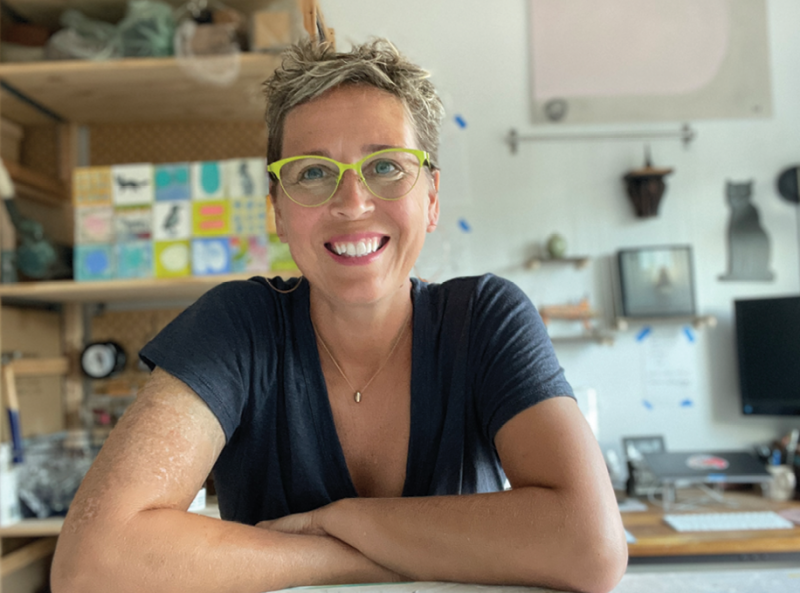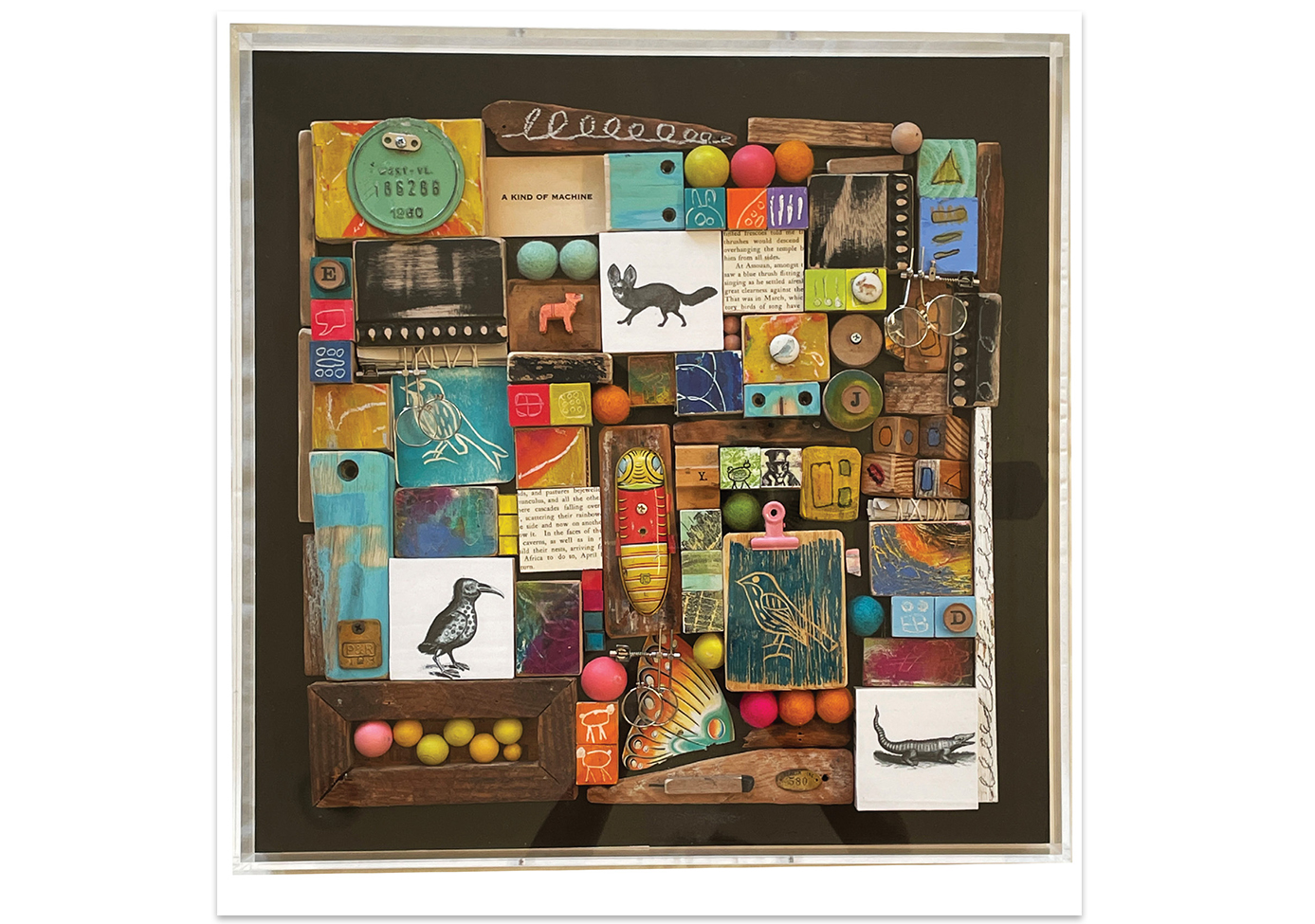See her work this month at Miller Gallery

Robin Howard’s shadow boxes are encapsulated universes of found objects, linoleum cuts, and cast-off wood and wire. Within them, color runs riot, imaginary birds awaken, and extinct animals come back to life through the pages of 200-year-old nature journals.
A Midwesterner by birth, Howard makes work that is deeply rooted in nature, both real and imagined. She and her brother grew up on a farm in Indiana, and she spent most of her time outdoors. “We were the sort of kids who got kicked out of the house when it got light and couldn’t come back in until it was dark,” she says.
Howard has been making art all her life, but didn’t start doing it professionally until she was about 35. “I was growing weary of the corporate world,” she says. “I’m not a team player—I don’t do that well. And I noticed that if I paid attention to my art, made it my focus, I could make at least some of my living that way.”

Game Theory #4 (assemblage, 20 by 20 inches, 2021)
Today, she’s making all of her living through art, creating her own pieces, as well as commissions. In addition to her shadow boxes crafted using found objects, etchings, painted cubes, old documents, and beeswax encaustic, she’s known for her popular wooden abstract dog sculptures. Her work can be seen at The Gallery at Sweetgrass at Wild Dunes and the Miller Gallery, where she has a show this month alongside photographer Jason Ogden of Station 28.5. Here, Howard shares insights into her process and why she wants her work to enchant viewers.
Artistic Beginnings: When I was five, my mother accidentally wrapped a roll of Scotch tape in one of my presents. It was this little bag, and all I know is I could have cared less about anything else in there. Are artists born or made? I don’t know. But I do know as soon as I got my hands on adhesives, I was off making paper sculptures. I’d had no exposure to visual fine art at all, because my parents were extremely religious. That was just something inside me. From then on, I’d use whatever I could find. That was a lot of wood and fabric, because my dad was a carpenter and my mom was a maker, a sewer.
Art for Good: I started selling my art in my 20s, when the AIDS crisis was just beginning. I’d make things, people would buy them, and I’d donate the money to AIDS organizations. I did that for about 10 years. Today, I make art as a way to create a state of mindfulness for people. Mindfulness is hard, but when something surprises and delights you, you’re in that moment. You can’t be anxious and curious or delighted at the same time.
Creative Process: There’s a lot of nostalgia; the shadow boxes remind me of growing up, woodworking. The beeswax encaustic is nostalgic, too, as my friend’s dad kept bees when I was young. I make everything in the boxes and that part takes a long time—it can take up to a year. I have this massive table in my studio, and when they’re done all the little pieces come out onto the table. This part goes pretty quickly; it’s kind of like interior design. You just know what goes where.

(Left to right) Dog #9 (assemblage, 12 by 10 inches, 2021); Wizards Chess VI (assemblage, 12 by 12 inches, 2021)
Mathematically Sound: The trick to my art is everything follows the golden ratio; it’s all laid out mathematically first. That’s because if there’s a “speed bump”—if your eye isn’t moving across the visual—it’s usually math that solves it. It looks like total chaos, but it’s not.
Put a Bird on It: I’ve been soaking in these old naturalist journals for two decades, and I started making up birds. So now I have this big journal of fake birds, and I like to invent stories about where they live, how they migrate, what they build nests of. So I decided to make pictures of those them.
Regaining her Innocence: When I started out, I would have been considered an outsider artist, because I had no formal art education or knowledge of the art market. Now, of course, I do know it. I have to; I’m represented, I make a living this way. And whether you feel it or not, you start to get influenced by the market. We all changed during the pandemic, and the way I changed is this: If I’m not making the art that I want to make, then I’m going to retire. I’ve gone back to being an outsider—I don’t care what the value is. I think people need me to go back to being true to myself, because that’s where the curiosity comes from. I’ve gone back to manufacturing curiosity.